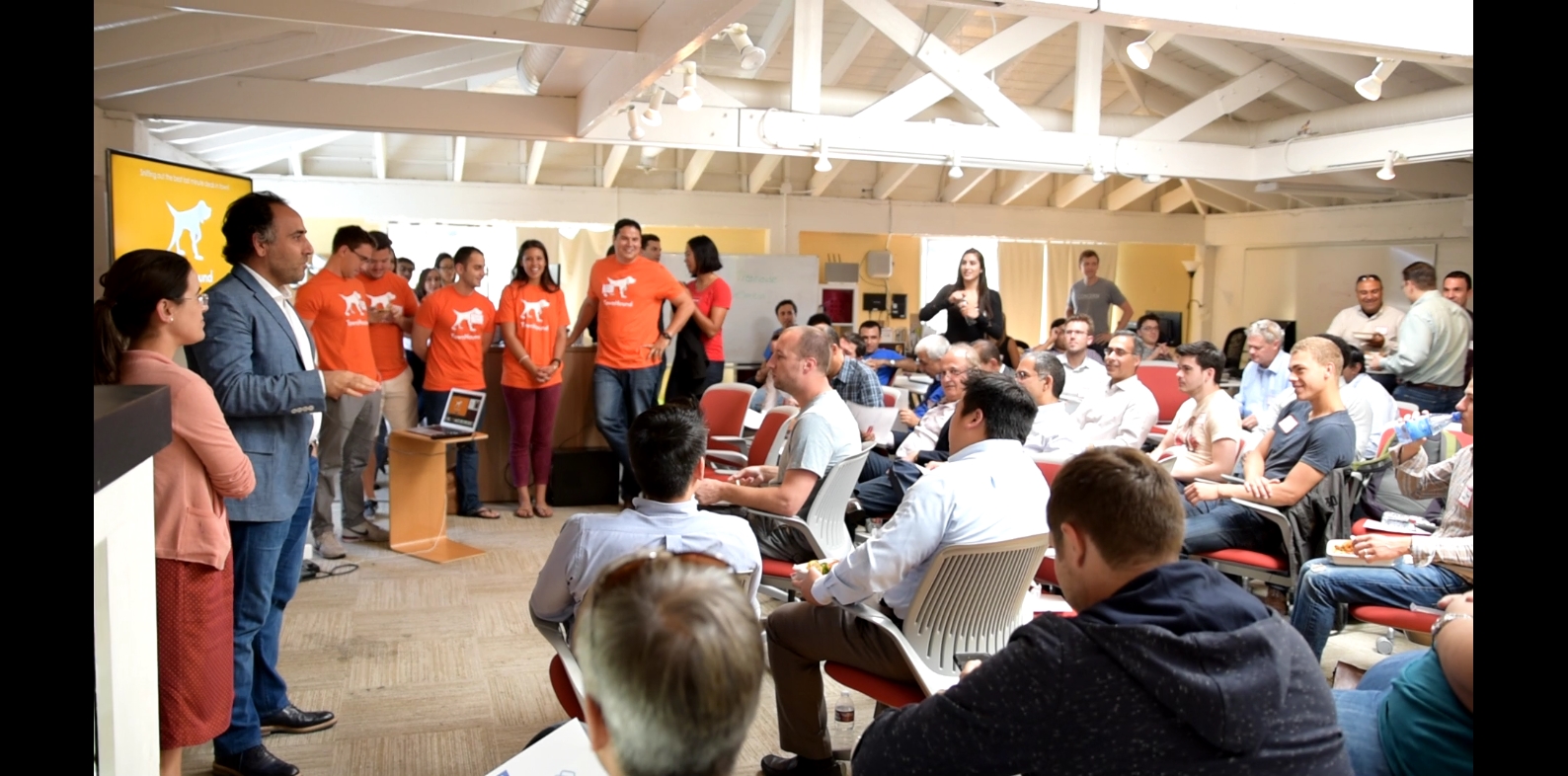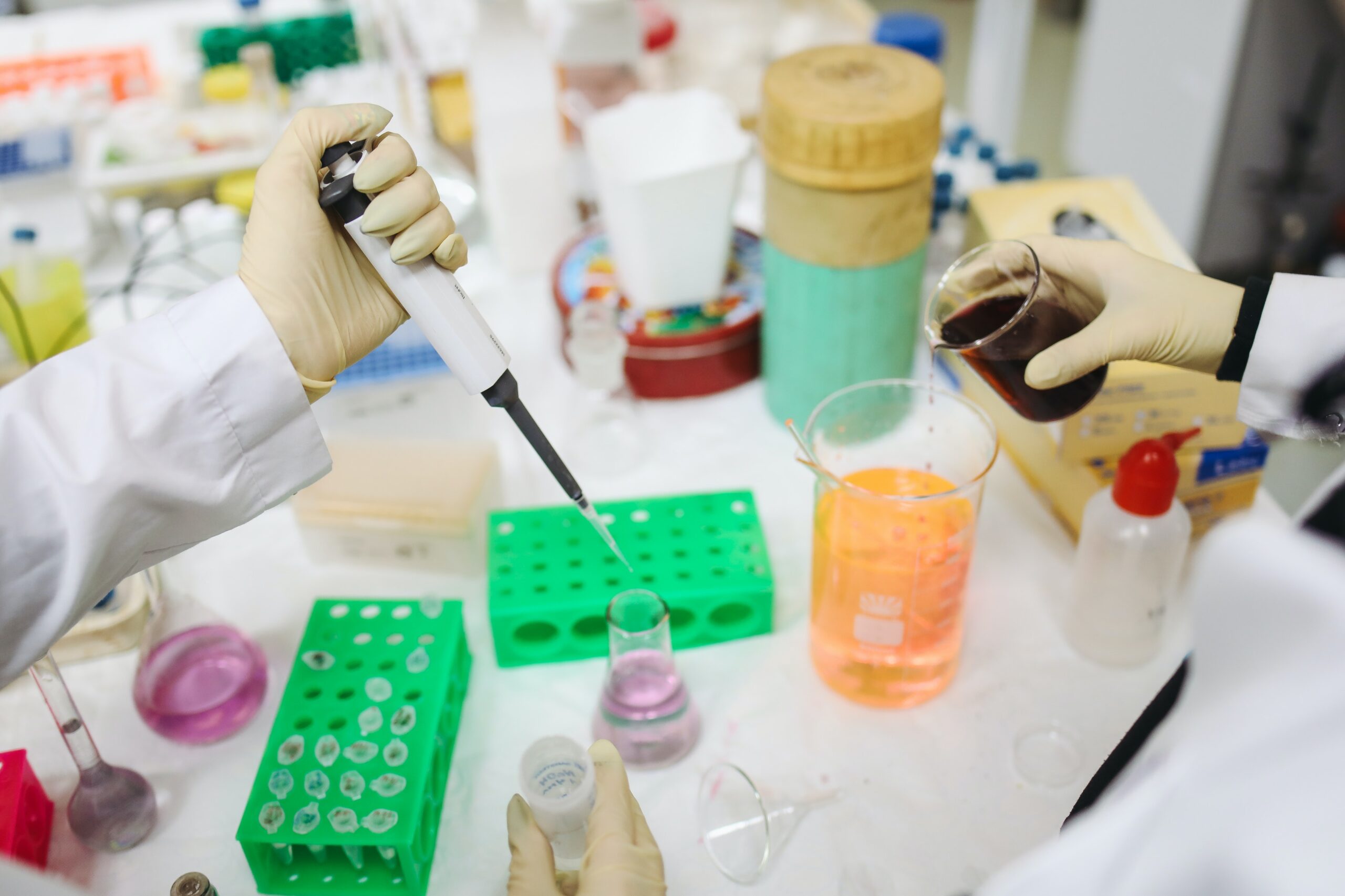This case study is about Pear portfolio company, Xilis, founded by David Hsu and Xiling Shen.
Using academic research to help patients
Go commercial, or continue academically?
Pitching a technical product to investors
What’s ahead for Xilis
Using academic research to help patients and make a real impact
Xiling Shen still remembers the moment he bumped into David Hsu in the hallway at Duke University during his first job interview. The two chatted only briefly, but David made an impression. Later, David formally interviewed Xiling for his second interview, and the two discovered that they shared many research interests.
“I just remember…sometimes, you just feel like it’s love at first sight,” Xiling jokes.
“As an academic junior faculty, you’re focused on publishing papers. But when I was talking to David, he asked ‘How do you think about how to help patients?’ and that suddenly opened a door—that’s where you really make an impact. 10 or 20 years down the road, do you really want to be remembered for how you published this many papers that probably no one reads anymore?”
The conversation also convinced Xiling that he had to move down to Duke. There, he and David worked together over the next three years. They focused on the big question of how to use patient-derived models of cancer as a potential diagnostic tool.
Patient-derived models of cancer are created by growing small versions of tumors taken from tissue donated by patients.
“Patient-derived models of cancer are great for research or discovering new tools for discovering new drugs. The problem is, they’re not very useful in a clinical setting,” says David. “The main reason is that a lot of these models take too long to make, so I can never use them in real time to guide patient care. I don’t have time to grow these models to do all this testing.”
That was where Xiling fit in, with his biomedical engineering research and expertise in organoid formation. The two developed “micro-organosphere technology,” a microfluidic-based method of growing miniature organoids. David saw that this new technology had the potential to be used as a diagnostic assay in real time to guide patient care.
“I’d been doing patient-derived models of cancer for a decade, and until we started making these droplet organoids, I never felt that there was going to be a patient-derived model of cancer that I could potentially use clinically as a diagnostic tool,” says David. “I’ve worked with cell lines, regular organoids, patient-derived xenographs. Because of the limitations, they were never going to be able to be used from a clinical perspective, and there’s plenty of companies who have tried and it’s been very difficult.
Go commercial, or continue academically? How to evaluate and make the decision
With the discovery, David and Xiling faced two options: continue researching academically, or try to create a company around their new technology. The two ultimately decided that they could develop the technology faster by commercializing.
“When you work in an academic lab, sometimes there isn’t that urgency. When we’re running the lab, we have 20 other projects to do—so, sometimes we lose our focus because we go on other tangents, depending on what piques our interest,” says Xiling. “From a company standpoint, you have to meet deadlines, you have timelines.”
Understanding which path is right to pursue requires understanding the differences in the two “worlds”. Academia is a publication-focused model of research, thus novelty is more important, and it’s okay if the research works, say, 70-90% of the time, as long as it produces groundbreaking knowledge.
For research that is intended to be commercialized, the technology obviously needs to work 100% of the time and meet market needs. There is heavy emphasis on quality control and product development, which often cannot be done in academia. Moreover, these are not the typical kinds of projects that graduate students pursuing publication will want to work on anyway.
Xiling often warns junior students and postdocs eager to pursue entrepreneurship not to go out to investors prematurely, when a technology is not ready for commercialization. As with starting any company, the fundamental proof of concept needs to be complete before raising any funding. You need to collect feedback to shape and focus your technical idea and effort.
“The typical mistake is you develop a product for an imaginary customer, or you develop something where there’s no path into the clinic because of the regulatory or reimbursement reasons,” says Xiling.
Students can also be tempted to start a company around a solution they’ve discovered that is only an incremental improvement.
“People think, ‘Hey I can do this 30% better.’ But, you’re not going to replace the existing product for doing 30% better,” Xiling says.
It is also important to realize that technology development is only a small part of getting a company to succeed.
“70% is about all the other things—operating, marketing, sales, BD…” says Xiling.
Academics can also underestimate the importance of management in building a successful company.
“You don’t become a professor because you are good at managing, but that’s very important. Managing talent and managing companies is certainly a lot different from managing an academic group,” says Xiling.
David and Xiling have found success by hiring the right people.
“Getting the right people dedicated to tasks where they can play to their strengths—I think that’s the most important thing,” says Xiling.
Pitching a technical product to investors
Mar and Nils asked Xiling and David if they might be interested in pitching their product at Pear Demo Day — a week and a half before the day.
“I remember we ordered the t-shirts,” Xiling laughs. “And we came up with the name, Xilis, not because I’m ego-centric, but David was just like, ‘Oh that looks good.’ The other option was like ‘Davis’ — David’s name with my name.”
At first, David and Xiling were resistant to practicing their pitch, despite Mar and Nils offering to help.
“We had a little arrogance, because you know, we’re faculty. That’s our job, presenting thoughts to an audience, and we love it,” Xiling said.
“Nils wanted us to practice all the time, but we were like, ‘We don’t have time to do this thing,’” David laughs.
In the end, the two admit that the practice was quite helpful.
“Even if you’ve been presenting for such a long time, you’re talking to your peers. It’s very different to talk to a lay audience and really get them to understand why this thing is important—which was so self-evident to us,” says Xiling.
The practice also showed in the results. Prior to Demo Day, Mar had already introduced Xiling to a few VC’s, but the conversations had not gone anywhere. After the presentation, investor interest flooded in within 9 days. Xiling and David flew back out to the Bay Area on a Thursday night and returned to Duke on Monday with term sheets in hand.
“Pear provided an opportunity to hammer out 80% of the questions we got from investors,” says Xiling. “No matter how much you prepare or think about something, nothing can replace getting real-time feedback.”
Through practicing with Mar and Nils, and then through the real live experience of meeting with different investors. David and Xiling were able to continuously refine their pitch and understand the common themes of what investors cared about and how to communicate effectively with them.
The first important learning: explain your product as clearly as possible with crisp messaging.
“Since we’re in the field, why the technology is important is very self-evident to us. We wouldn’t normally spend so much time explaining that in academic presentations,” says Xiling. “But to the lay audience, you have to be mindful of any jargon coming out of your mouth, and you have to make it clear.”
The second important learning: have an explicit explanation of your go-to-market strategy.
Academic founders have often thought very deeply about their technology, but haven’t spent as much time thinking about their exact customers and how they will go about gathering them.
“For us, we were thinking, ‘This is helping patients,’ and that’s what we had always thought about. But for investors, they’re asking, what is your plan? What’s the first product? What’s a second product? Who do you have as customers? What’s the timeline? It has to be very spelled out, the exact steps and how much investment you need,” says Xiling. “We were not even thinking about a lot of those questions. But thinking back, those answers could definitely have been better thought out or better spelled out, more deliberate.”
Xiling also recommends really thinking through what kind of company you are building.
“I think in general, there are two types. One is the transformative, paradigm shifting type—high risk, higher reward. The second is more incremental, but you have a faster go-to market and could potentially be profitable as a private company,” says Xiling.
“For VC, especially Silicon Valley VC’s, they want the first type of the company—they’re going out to make 100x returns. So, kinda understanding what the investor is looking for and going after the right type of investors is important.”
Finally, it’s absolutely critical to have the right team.
“At the end of the day, it’s about the execution. Do you have a good balance of leading technical people, but also experienced business people? You want to have a team that has the right business experience in the intended market, so that investors feel the investment is more de-risked. I think that’s probably the biggest challenge for most academic teams. It’s often the piece that would increase their attractiveness significantly.”
What’s ahead for Xilis
Xilis is currently focusing on conducting clinical trials and in talks with big pharmaceutical companies, as well as getting on the path to becoming CRIA certified.
And like any startup, team building is an ongoing process.
“We are kind of a unique company in terms of being very interdisciplinary. Engineering, biology, clinical, and of course then adding business people, software, hardware… so we’re really focused on building a team that has complementary skills. Right now, the next hiring priority is continuing to hire the right business expertise.”








